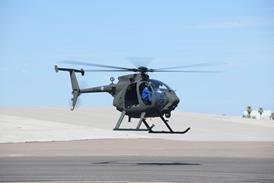The abiding lesson from the recent Singapore air show is not the magnitude or nature of the present economic unrest in the Asia-Pacific region, but the vulnerability of the aerospace community in the region to such a crisis. Much as time and effort needs to be expended in countering the present difficulties, much more needs to be spent in finding ways to avoid future difficulties.
The Asia-Pacific region as a whole (if it is at all valid to try to treat as a unit such a spread of economic, political and cultural diversity) is in the unique position of having almost unlimited potential growth in both the manufacture of aerospace products and in their use. Even as currencies collapse and Western advisors queue to advise, a new survey by the International Air Transport Association reckons that annual air-passenger-traffic growth will still reach 4.4% up to 2001.That may be almost half of the expected growth rate this time last year, but it continues to underline the long term potential of the Asia-Pacific region.
Behind the attention grabbing predictions, there is a more fundamental problem which required action regardless of whether its bloated financial markets were in a state of boom or bust.
Unlike Europe, it has not in most cases yet reached the stage where even a transnational joint venture is a reasonable proposition in most sectors. It is a region in which regional transport is almost an unknown, with the most direct route between two points in different countries being the one that is never used, so that traffic is circuitously funnelled into expensive hubs.
It is a region in which (as in Europe) every nation state has its own flag carrier, struggling under the burden of national expectations of a link to every other nation state, regardless of traffic justification.
It is a region in which many nations harbour the ambition to build aircraft or at least participate in the building of them, but where the reason for doing so is more often the price exacted from an offshore manufacturer as offset rather than a genuine need to build something. So what is to be done?
For a start, the Asia-Pacific nations need to be much smarter than their European counterparts, and to spot earlier in the economic growth game that not all of them will be able to (or even want to) mimic every other nation in its harbouring of national champions. No other region in the world has provided a sustainable power-base for multiple manufacturers or a plethora of profitable airlines.
Given that, the businessmen of Asia-Pacific must start to face real choices on how they might co-operate in the future. If they cannot all succeed on an individual national level (and it would appear that they cannot), then they must learn to co-operate with each other within the region, or to co-operate individually with businesses elsewhere in the world. On current evidence, the former appears to be nigh-on impossible to achieve in the short or medium term. Few significant joint ventures within the region on the manufacturing side have proved to be robust enough to survive national politics. There were almost as many failed joint ventures or takeovers as successful ones.
Those who remember when Avro and McDonnell Douglas tried to offload unsuccessfully what were then flakey businesses on to Taiwan might caution Asia's businessmen to beware the Western manufacturer trying to dump aerospace ventures on aspiring nations which have more money than industrial sense.
There is no easy solution to this problem of matching national (often purely political) aspirations with the harshness of economic reality. What is clear, however, is that the Asia-Pacific nations cannot hide their eyes and pretend that the problem will go away. Despite the damage caused to some markets by the current difficulties (and the potential that others which have escaped so far will suffer in the longer term), the region's businesses have escaped the predicted meltdown comparatively lightly so far. They should not assume that that will always be true.
Source: Flight International























